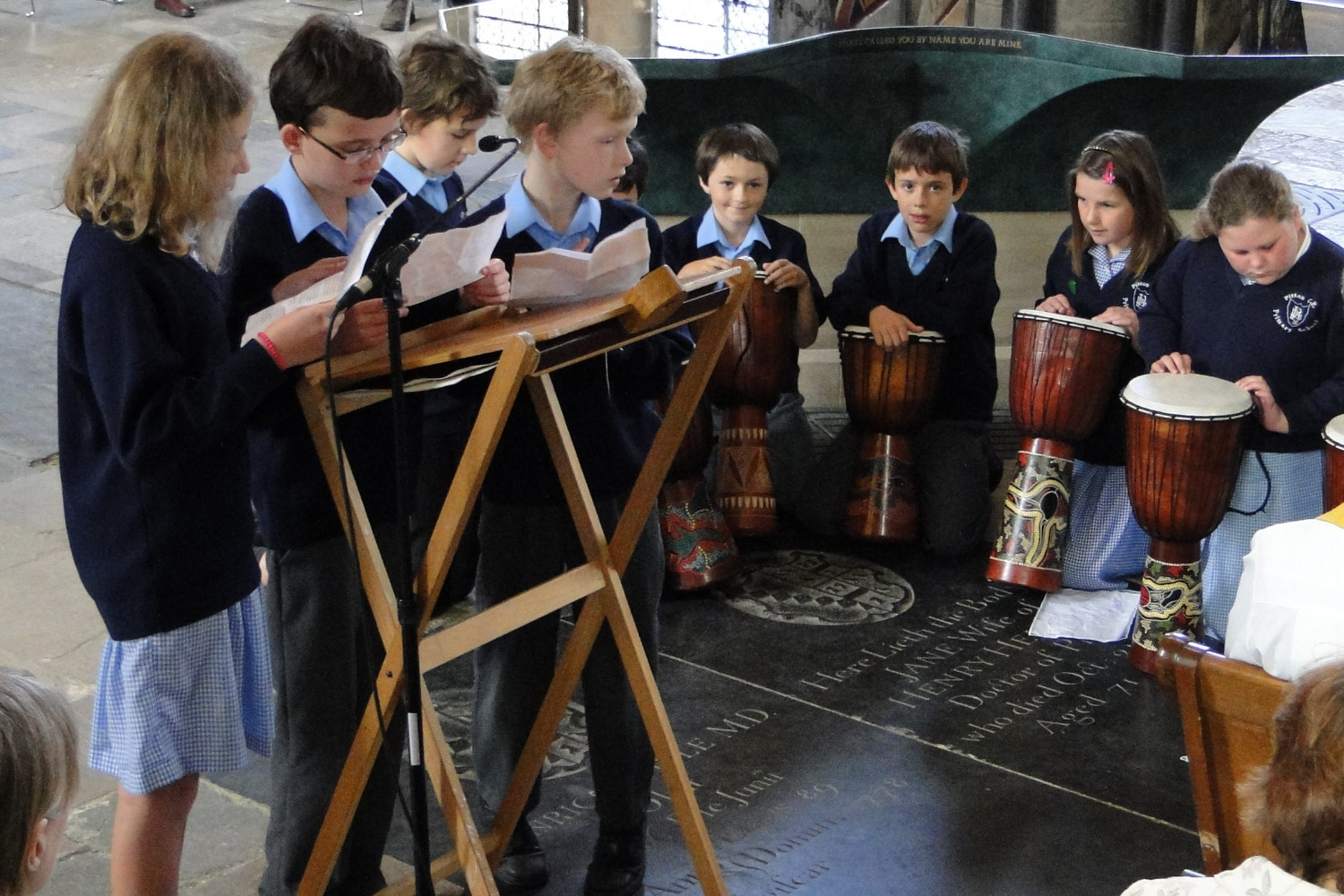Being present, we will show compassion, speak truth and offer hope.
Access resources, policies and helpful links to help with those specific times when pupils and staff come together to learn, sing, reflect and pray together.
It's often difficult to define what makes a church school 'distinctive' and attractive to parents. Our experience tells us that a significant part of the answer is found in the school's underpinning Christian vision and values which are lived out in all the school does but is shared especially well in collective worship.

All schools are required to provide a daily act of collective worship, but it shouldn’t be included just because it's a legal requirement. Here are some reasons why, even without this requirement, it is good to hold it in schools. For example collective worship:
- gives time to be still, to breathe, offering space and quiet to be yourself, and enables time for adults as well as children and young people to reflect, to think;
- helps to foster a spirit of community – whether as a whole school, key stage, year group or class. In this time of being together it is a time of sharing what unites us, while also noticing and celebrating the diversity of beliefs and values in our community and world;
- can enable the joys and sorrows of those present, those local to the school, and the joys and sorrows of national and international news, to be reflected upon and shared in a way which is otherwise not possible in school;
- offers space for spiritual growth, by enriching thinking. It can help pupils reflect on the many ultimate questions they may have and for some it may provide an opportunity to come close to God and to reflect on the most important directions and values for their lives;
Because a church school’s Christian vision is at the heart of collective worship, what is covered will vary from school to school and the DBE is keen to encourage each school to develop their own programme.
Whilst we have given links below that support schools with content, many schools will choose to create bespoke content and will engage with clergy and pupils in the planning, leadership and evaluation of the impact of the provision. Almost all schools use the recommended structure that gathers, engages, enables reflections and responses and results in adults as well as children feeling able to say what they have ‘taken away’ into the rest of the day from the experience.
Collective Worship is similar in that it can take place anywhere, however it is a term which is used only in education, because no such assumptions about shared beliefs can be made in the case of a school community, even in a church school. The school is a collection of people who come from a variety of backgrounds and who happen to be together primarily for the purpose of education, not for worship. The family backgrounds of pupils may be very different in terms of beliefs and adherence to religion or of no religion.
Church school collective worship starts from the principle that Christians believe that all people are a reflection of the 'Image of God'. This means that all pupils, staff and visitors are equally important and equally valuable in His sight. Therefore, school collective worship should be inclusive, invitational and inspiring and delivered in a way that enables all members of the school community to feel part of the experience. The family and cultural backgrounds of the pupils schools serve should also be remembered and respected.
In collective worship children and adults will be responding to the worship on offer in different ways and at different levels; some will be passive observers, learning about worship but not participating in it; some will be "at the threshold", interested in the process and participating in it but not full believers; for others the act of collective worship may be a time of prayer and connection with God. It is the task of Collective Worship to provide a setting in which the integrity of those present is not compromised but in which everyone finds something positive for themselves.
Collective worship in the classroom is the perfect place to begin learning about how to lead prayer and reflections. The SIAMS evaluation schedule says worship should ‘enable pupils as well as adults to engage in the planning, leading and evaluation of collective worship that lead to improving practice.’
Pupils should be responsible for the planning of worship as well as taking the lead for parts of it. You might want to ask groups of children to talk to you about what they want, as you lead on the overview of the term ahead. You could include pupils in planning for the following week, working on a rota to allow all those who are keen to have a turn. Other children could be involved in setting up the worship ‘Altar’ table, lighting the candle, reading the Bible or operating the music.
In all DBE training on collective worship, we include examples of ways in which young people can be engaged in an aspect of planning, leading or evaluating. The CW Forum has a focus on this work and is gathering examples of resources that schools have been using successfully.
How will you enable the pupils in your school to ‘Use their Voice’ in collective worship? How might they help you set up reflection spaces in and around school?
It includes:
Below you will find the Church of England Guidance for CW which is the ‘go to’ document to help you see the way in which collective worship should give the feeling of ‘warm fires and open doors’. It is a must read. Based on this, the DBE has written a guidance document that will help your school write a model policy for collective worship. It includes wording that you may find useful if a parent seeks to withdraw their child from collective worship. You can download it in Word below and edit it to reflect the unique provision in your school. What is the impact of collective worship on the children and adults in your school? How do you monitor this as a school team, with governors? The final document will help you with some questions to support your evaluation, but do make sure your School Improvement Plan and monitoring cycle includes the evaluation of the effectiveness of your church school!
Church of England Guidance for collective worship in church schools
Model Policy
Collective worship - Capturing impact for school improvement evaluation
Main contacts for further support
Esther CulySpecialist Adviser for RE |
|


